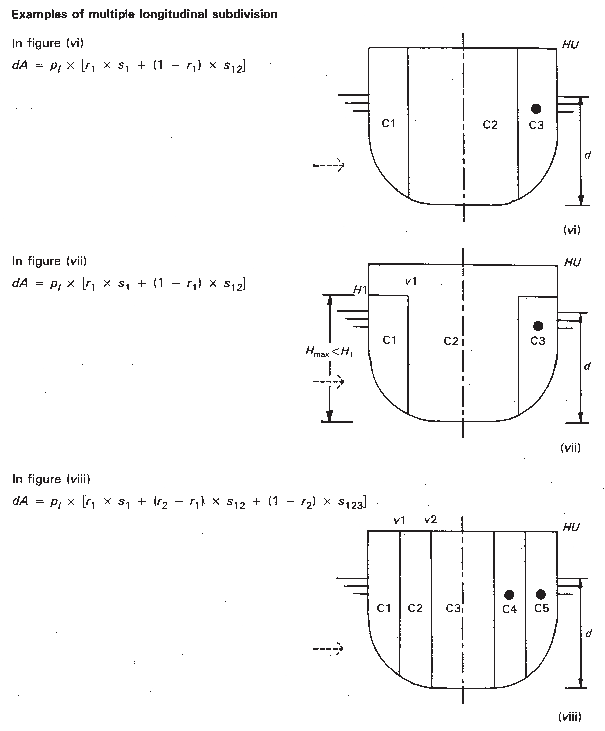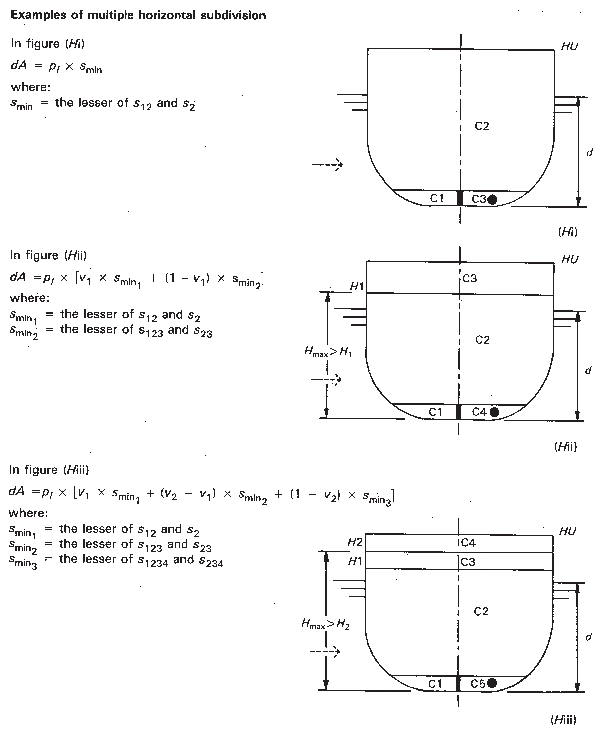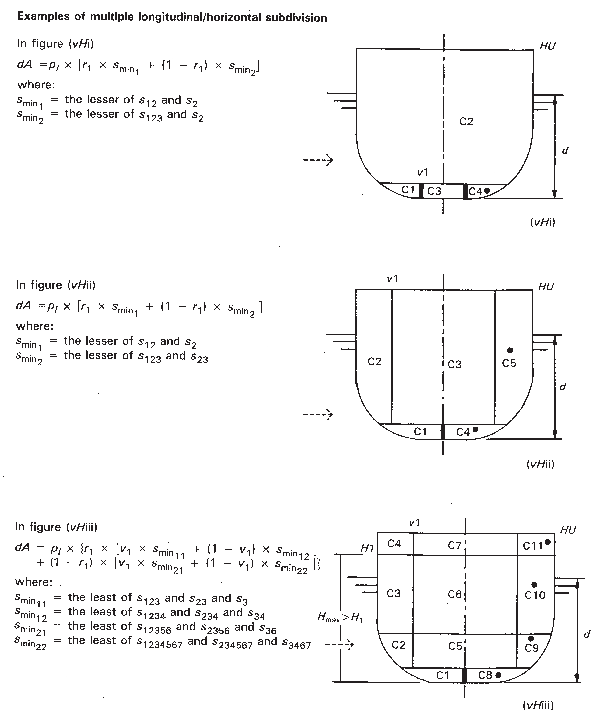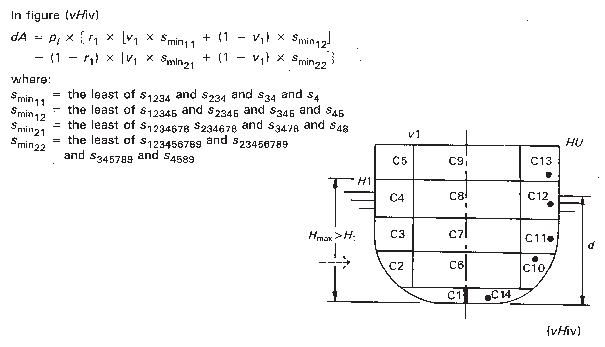This section details the contribution to the attained index A of
various combinations of longitudinal and horizontal watertight subdivision and
illustrates the concepts of multiple horizontal and longitudinal subdivision.
For multiple longitudinal subdivisions with no horizontal subdivisions, the
general formula is:
where:
|
m
|
= |
the number of longitudinal subdivisions, plus 1, |
|
r
i
|
= |
the r-value as function of b
i, |
|
s
i
|
= |
the s-factor for compartment i. |
For multiple horizontal subdivisions, with no longitudinal subdivisions the
general formula is:
where:
|
n |
= |
the number of horizontal subdivisions between the subdivision
waterline and H
max, plus 1, |
|
v
j
|
= |
the v-value as function of assumed damage height H
j, |
|
s
minj
|
= |
the least s-factor for all combinations of damages obtained
when the assumed damage extends from the assumed damage height H
j downwards. |
Generally, when there are combinations of longitudinal and horizontal
subdivisions:
where:
|
m |
= |
the number of longitudinal subdivisions, plus 1, |
|
n |
= |
the number of horizontal subdivisions (within each longitudinal
subdivision) between the subdivision waterline and H
max, plus 1, |
|
ri
|
= |
the r-factor as function of b
i, |
|
vJ
|
= |
the v-value as function of assumed damage height H
j, |
|
s
minij
|
= |
the least s-factor for all combinations of damages obtained
when the assumed damage extends from the shell to b
i and from the assumed damage height H
j downwards. |
The following examples illustrate how to deal with situations where there
are combinations of longitudinal and horizontal subdivision, assuming the damage to
occur between two consecutive watertight bulkheads only.
If, however, the damage extends beyond one or more transverse bulkheads,
then all terms pi, ri for i = 1, 2 … m are calculated for a group
of wing compartments as a function of bi.
3.1
Examples of longitudinal subdivision
Examples of longitudinal subdivision only are given in Figure A-9.

Figure A-9 Interpretation of longitudinal subdivision (in all
instances, v = 1)
Each part of the figure illustrates the damage cases which would need to be
evaluated for a particular arrangement of watertight boundaries.
The formulae for calculating the contribution to the attained index
dA are given in each case.
3.2
Examples of horizontal subdivision
Examples of horizontal subdivision only are given in Figure A-10.

Figure A-10 Interpretation of multiple horizontal subdivision (in all
instances, r = 1)
This illustrates the principles described in the previous section as
applied to horizontal subdivision.
Regulation 25-4.7 specifies that, in the event that a lesser vertical extent
of damage means a lesser contribution to the A-value, then this lesser extent is
to be assumed in obtaining the requisite damage stability results.
3.3
Examples of longitudinal/horizontal subdivision
This section illustrates the principles used when combining the longitudinal
and horizontal watertight subdivision described in the previous two sections. Examples
are given in Figures A-11 and A-12.

Figure A-11 Interpretation of combined longitudinal and horizontal
subdivision

Figure A-12 Interpretation of combined longitudinal and horizontal
subdivision